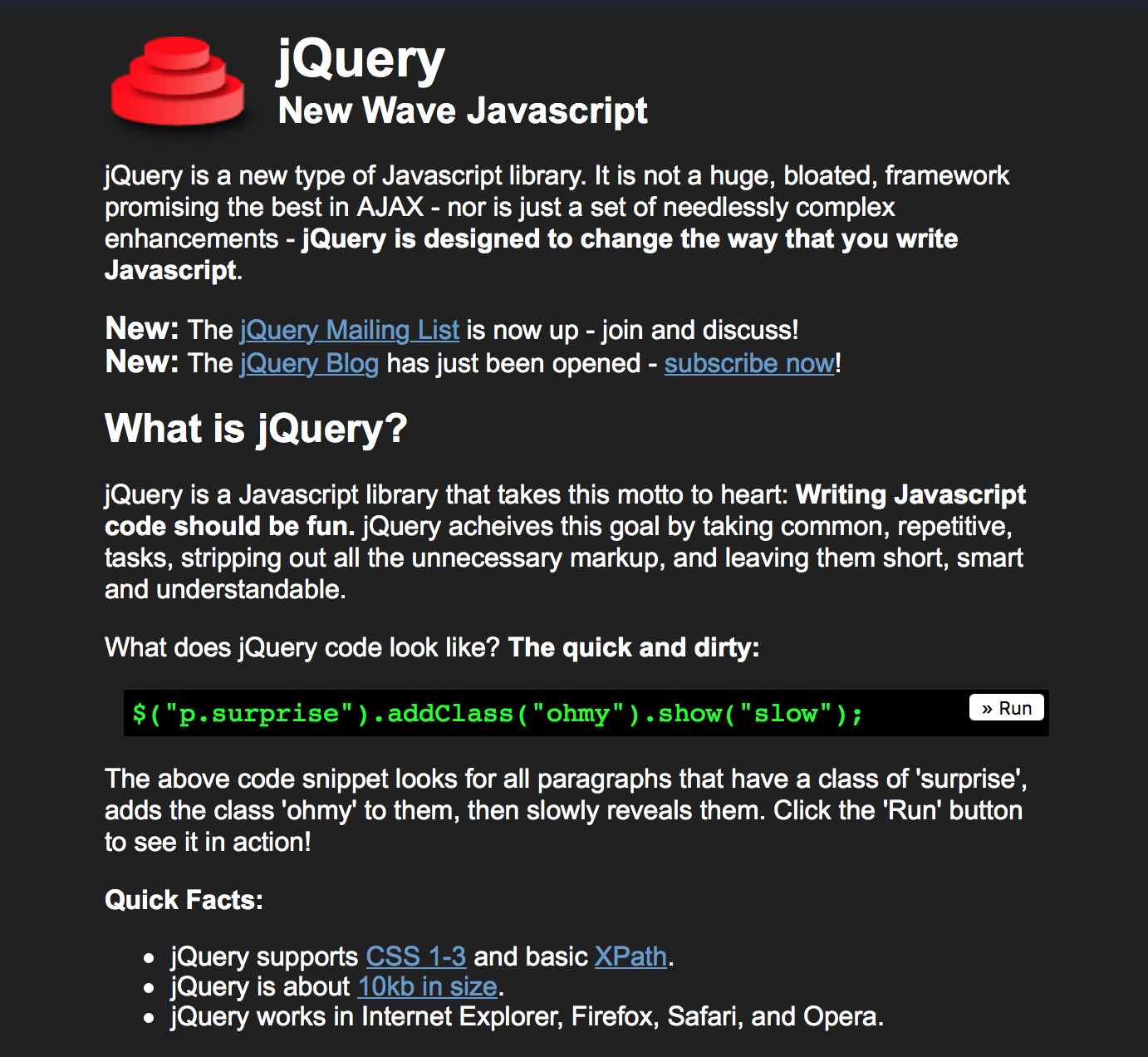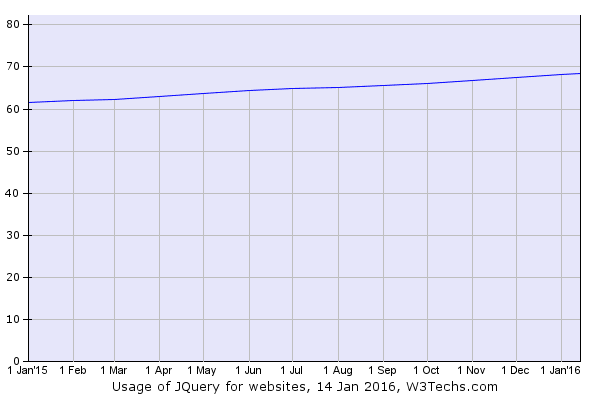
jQuery, the JavaScript library everyone loves to hate, has turned ten years old today. The library was first introduced in 2006 by John Resig, at BarCamp in New York City, as a side project he had worked on in college.
Since then, the library has exploded in success and is now used on more than 77.8% of the Web — it’s become the overwhelmingly default way to write JavaScript, given that it makes it easier to perform a number of common tasks.

When jQuery was released the internet was a very different place. Writing JavaScript meant a minefield of compatibility issues for developers across vastly different browsers like Internet Explorer 6 or Mozilla Firefox, and it was often confusing or convoluted to get seemingly simple tasks done.
jQuery’s popularity across more than ten years is impressive in a climate where there’s a hot new tool for Web developers seemingly every day. It’s reached impressive prevalence — with more than 6,000 commits on GitHub over the years — and you’d be hard-pressed to find a major company not using it somewhere on their website.
The library got its own foundation in 2012, the jQuery foundation, which is responsible for continued development and stewardship.

jQuery is now up to version 2.2.0, though W3Techs reports that more than 95% of all sites leveraging the library still use version 1 because it supports older browsers. The foundation announced last week that the current releases are expected to be the final code ahead of jQuery 3.0 availability later this year.
All this popularity in mind, many developers argue that there’s simply no need to use jQuery, because everything it does is achievable in pure JavaScript, albeit with a little more syntax.
The thing is, the library isn’t going anywhere anytime soon. It makes life easier for both novice and advanced developers, and has become a universal, consistent way of interacting with JavaScript for certain tasks.
It’ll be interesting to see if we’re still using jQuery in ten years like we are today — or if it’ll have slowly faded into irrelevance as the Web morphs into something different again.
Get the TNW newsletter
Get the most important tech news in your inbox each week.




